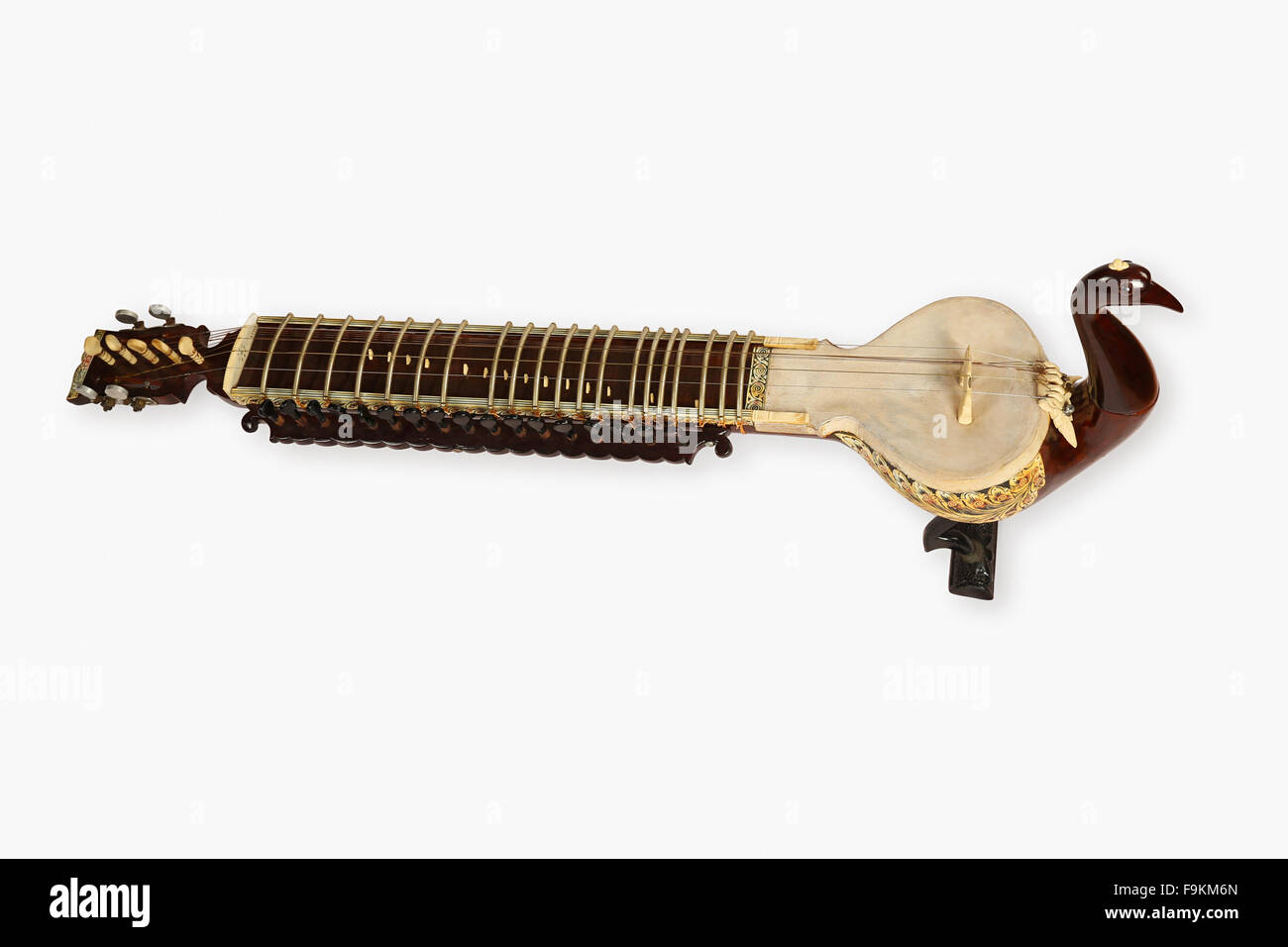

String instruments are often featured in a variety of ensembles, from small chamber groups to large orchestras. Nyckelharpa: A traditional Swedish instrument resembling a cross between a fiddle and a hurdy-gurdy, the nyckelharpa is played with a bow and has keys to change the pitch of the strings.Oud: An ancient Middle Eastern instrument with a short neck and rounded body, the oud is played with a plectrum and holds a central role in Arabic, Persian, and Turkish music.Balalaika: A Russian folk instrument with a triangular body and three strings, the balalaika is typically played by strumming or plucking.Koto: A Japanese zither with 13 strings, the koto is played by plucking the strings with finger picks, showcasing a delicate and refined sound.Sitar: A plucked instrument from India with a long neck and multiple strings, the sitar is often featured in Indian classical music.Numerous cultures have their own unique string instruments that play essential roles in traditional music: Rebab: A bowed, lute-like instrument from the Middle East, the rebab is used in classical Arabic, Persian, and Central Asian music.Erhu: A two-stringed Chinese instrument played with a bow, the erhu is known for its hauntingly expressive sound in traditional Chinese music.Viola da Gamba: A European Renaissance and Baroque instrument, the viola da gamba resembles a cello but has six or seven strings and frets.Double Bass: The largest and lowest-pitched instrument in the family, the double bass provides the foundation for orchestral, chamber, and jazz music.Īside from the violin family, other bowed string instruments have emerged in different musical cultures:.Cello: Known for its rich, sonorous sound, the cello holds a prominent role in orchestral music and as a solo instrument.Viola: Slightly larger and lower-pitched than the violin, the viola adds depth and warmth to orchestral ensembles and often plays supporting harmonies.Violin: The smallest and highest-pitched instrument in the family, the violin is renowned for its expressive range and is widely used in various music genres.The violin family, consisting of four main instruments, is the cornerstone of Western classical music: The Romantic period ushered in larger orchestras, and composers like Richard Wagner and Pyotr Ilyich Tchaikovsky pushed the boundaries of string instrument techniques. Composers like Johann Sebastian Bach, Wolfgang Amadeus Mozart, and Ludwig van Beethoven wrote iconic works showcasing string instruments’ expressive potential. The Baroque and Classical periods saw the formation of orchestras, which heavily featured string instruments. Luthiers like Andrea Amati and Antonio Stradivari revolutionized instrument making, crafting instruments with an unmatched tonal quality that is still revered today. The violin family, comprising the violin, viola, cello, and double bass, emerged in the 16th and 17th centuries. Bowed string instruments like the Chinese erhu and Indian ravanahatha have been played for centuries, while plucked instruments like the Greek kithara laid the groundwork for the modern guitar. The origins of string instruments can be traced back over 2,500 years, with early examples found in numerous ancient civilizations. This article delves into the fascinating world of string instruments, exploring their history, various types, and techniques used to play them.

Throughout the years, string instruments have evolved into a diverse family, including the violin, viola, cello, double bass, and a range of world music instruments like the sitar and koto. They produce sound by vibrating strings, which resonate within a hollow body to create a rich, sonorous tone. String instruments, also known as chordophones, have been integral to music history for centuries. We may earn a commission through products purchased using links on this page.


 0 kommentar(er)
0 kommentar(er)
